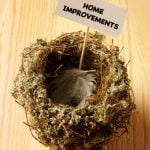Are you a history enthusiast or simply fascinated by the charm of medieval era? If so, you may be interested in incorporating medieval themed home improvement into your living space.
From decor and furniture to architectural elements and outdoor landscaping, there are many ways to bring the timeless appeal of the Middle Ages into your modern home. In this article, we’ll explore the allure of medieval themed home improvement and provide tips on how to find authentic pieces, embark on DIY projects, and showcase real-life success stories.
When it comes to medieval themed home improvement, the appeal lies in its ability to transport us back in time and create a sense of nostalgia for a bygone era. Whether you’re drawn to the rustic simplicity of medieval architecture or the intricate details of period-inspired decor, there’s something undeniably charming about incorporating these elements into your living space.
In this comprehensive guide, we’ll delve into the various aspects of medieval themed home improvement – from understanding the key elements of medieval home decor to researching historical accuracy and finding authentic pieces. Whether you’re looking to revamp your interior with medieval inspired furniture or add a touch of old-world charm to your outdoor space, we’ve got you covered with practical tips and insights.
Understanding the Elements of Medieval Home Decor
Medieval themed home decor offers a unique and timeless appeal that can transform any living space into a historic haven. Understanding the elements of medieval home decor is crucial for successfully achieving an authentic and cohesive look in your home. When it comes to creating a medieval themed interior, it’s important to consider key design elements such as heavy wooden furniture, intricate tapestries, metal accents, and rich color palettes.
One of the most defining features of medieval home decor is the use of heavy wooden furniture. Look for pieces with ornate carving and detailing to add a sense of grandeur to your space. Additionally, incorporating wrought iron accents such as candle holders, chandeliers, and wall sconces can further enhance the medieval ambiance in your home.
Tapestries are another essential element in medieval home decor, often featuring scenes from history or mythology. These intricate textiles can be used as wall hangings or drapery to bring texture and visual interest to your interior. When selecting tapestries, opt for rich jewel tones and elaborate patterns that capture the essence of medieval design. To complete the look, consider adding decorative metal pieces such as armor or weaponry as unique conversation starters throughout your home.
In terms of color palette, deep earthy tones such as burgundy, forest green, and royal blue are commonly associated with medieval decor. These rich hues evoke a sense of opulence and add warmth to your living space. By understanding these key elements of medieval home decor, you can create an inviting and historically inspired atmosphere in your own home.
Researching Historical Accuracy
When creating a medieval themed home, it’s important to ensure historical accuracy in the decor and furnishings. Whether you’re a history enthusiast or simply enjoy the aesthetic of medieval design, finding authentic medieval home improvement pieces can enhance the overall ambiance of your living space. But where do you begin your search for these historically accurate items?
One way to find authentic medieval home improvement pieces is by visiting antique stores, flea markets, and estate sales. These are great places to discover unique and genuine items that can add an authentic touch to your medieval themed home. Keep an eye out for antique furniture, religious artifacts, tapestries, and other decorative elements that reflect the craftsmanship of the medieval era.
Another option for finding authentic medieval home improvement pieces is by attending renaissance fairs or historical reenactment events. Vendors at these events often sell handmade items that are crafted using traditional techniques and materials from the medieval period. Whether it’s pottery, textiles, or metalwork, these artisanal pieces can bring a sense of authenticity to your home decor.
If you prefer the convenience of online shopping, there are numerous websites that specialize in selling replica medieval decor and furnishings. When browsing online stores for authentic items, look for products that are described as historically accurate or inspired by specific medieval periods such as Gothic, Romanesque, or Tudor. Additionally, consider joining forums or social media groups dedicated to medieval enthusiasts where members often share tips on where to find high-quality medieval themed home improvement pieces.
| Authentic Medieval Home Improvement Pieces | Where to Find Them |
|---|---|
| Antique Stores | Flea Markets and Estate Sales |
| Renaissance Fairs and Historical Reenactment Events | Online Stores Specializing in Replica Medieval Decor and Furnishings |
DIY Medieval Themed Home Improvement Projects for the Crafty Enthusiast
Medieval themed home improvement projects can be a fun and rewarding way to bring the charm of the medieval era into your modern home. Whether you’re a history enthusiast or simply drawn to the unique aesthetic of medieval decor, there are plenty of DIY projects that can help you achieve the look you desire. From furniture and textiles to decorative accents and architectural elements, there are countless ways to incorporate medieval inspiration into your home.
One way to start your DIY medieval themed home improvement project is by focusing on furniture and decorative accents. For example, crafting a wooden coat rack with wrought iron hooks can add a touch of medieval charm to your entryway. Additionally, creating your own tapestries or wall hangings featuring medieval inspired designs can instantly elevate the ambiance of any room in your home.
Another approach to DIY medieval themed home improvement is to focus on architectural elements. For example, building a faux stone fireplace surround or creating custom wooden shutters for your windows are great ways to incorporate medieval design elements into your living space. By embracing these DIY projects, you can infuse your home with the timeless appeal of the medieval period while also showcasing your crafty skills.
For those interested in embarking on a DIY medieval themed home improvement project, it’s important to do thorough research and planning beforehand. This includes studying historical resources, visiting museums, and exploring online sources for authentic design inspiration. Additionally, sourcing high-quality materials and tools will be essential for achieving an authentic and visually stunning result.
| Medieval Themed Home Improvement Projects | Recommended Resources |
|---|---|
| Crafting a Wooden Coat Rack | Local hardware store, online woodworking tutorials |
| Creating Custom Wooden Shutters | Woodworking supply stores, historical architecture books |
| Building Faux Stone Fireplace Surround | Home improvement stores, masonry tutorials |
Where to Shop for Medieval Inspired Home Decor and Furniture
When it comes to finding medieval themed home decor and furniture, there are many options available for enthusiasts. Whether you’re looking for authentic pieces or modern reproductions, there are several avenues you can explore to bring the medieval vibe into your home. Here are some places where you can shop for medieval inspired home decor and furniture:
- Antique Stores: One of the best places to find authentic medieval pieces is at antique stores. These stores often carry a variety of items such as tapestries, wooden furniture, and metalwork that can add a touch of historical charm to your home.
- Online Marketplaces: With the rise of e-commerce, there are numerous online marketplaces where you can find a wide selection of medieval inspired home decor and furniture. Websites like Etsy, eBay, and Amazon offer a range of options from handcrafted items to mass-produced reproductions.
- Specialty Shops: Some specialty shops specifically cater to those interested in historical or period-inspired home decor. These shops may carry a curated selection of items such as wall sconces, wrought iron furnishings, and ornate textiles that reflect the aesthetic of the medieval era.
Whether you’re on the hunt for an authentic medieval piece or a reproduction that captures the essence of the era, these shopping options provide a wealth of resources for finding the perfect additions to your home. By exploring these avenues, you can elevate your living space with timeless charm and historical significance.
Incorporating Medieval Architectural Elements Into Your Home
Medieval architecture is known for its grandeur, elegance, and timeless charm. Incorporating medieval architectural elements into your home can instantly add a touch of history and character to any space. Here are some ideas on how to bring the charm of medieval architecture into your home:
1. Arches: One of the most iconic features of medieval architecture is the use of pointed arches. You can incorporate this element into your home by adding arched doorways, windows, or even decorative arches in key areas of your home.
2. Exposed beams: Exposed wooden beams are another common feature in medieval architecture. If you have a high ceiling, consider exposing and accentuating the wooden beams for a rustic and authentic medieval look.
3. Stone accents: Stone was a commonly used material in medieval buildings, so incorporating stone accents into your home can instantly evoke a sense of history and elegance. Consider adding a stone fireplace, exposed stone walls, or even decorative stone elements throughout your home.
When it comes to incorporating these elements into your home, it’s important to balance historical accuracy with modern functionality and comfort. Consider working with a professional designer or architect who has experience with historical architecture to ensure that the integration of medieval elements is done tastefully and in line with the overall aesthetic of your home.
Incorporating medieval architectural elements into your home can create a truly unique and enchanting living space that pays homage to the timeless appeal of this historic design style. Whether you choose to add arched doorways, exposed wooden beams, or stone accents, embracing the charm of medieval architecture can transform your home into a true castle-like retreat.
Bringing the Medieval Vibe to Your Outdoor Space
When it comes to creating a medieval themed home, the outdoor space is just as important as the interior. The charm of medieval times can be brought to life in your garden and landscape through thoughtful design and decor choices. From rustic elements to lush greenery, there are numerous ways to infuse your outdoor space with a touch of medieval magic.
Embracing Rustic Materials and Architecture
One of the key elements of medieval themed outdoor spaces is the use of rustic materials such as stone, wood, and wrought iron. Consider incorporating elements such as a stone pathway, a wooden pergola, or wrought iron garden gates to evoke the feel of a medieval castle or manor. You can also create architectural features such as a small turret or tower to add an extra touch of medieval flair to your outdoor space.
Creating Authentic Garden Features
In medieval times, gardens were often used for practical purposes such as growing herbs and vegetables. To create an authentic medieval garden, consider planting a variety of herbs and edible plants in raised beds or wooden troughs. You can also include classic garden features such as a sundial, a stone fountain, or a simple trellis for climbing plants. These elements will not only enhance the medieval atmosphere but also provide functional benefits for your outdoor space.
Adding Decorative Accents
To complete the medieval vibe in your outdoor space, consider adding decorative accents that reflect the time period. Stone statues, weathered pottery, and antique-style lanterns can all contribute to the overall aesthetic. Additionally, incorporating traditional medieval symbols such as fleur-de-lis or coats of arms into your garden decor can further enhance the historical ambiance.
By incorporating these garden and landscape ideas into your home improvement project, you can truly bring the timeless charm of the medieval era to life in your own outdoor space. Whether you choose to embrace rustic materials, create authentic garden features, or add decorative accents, there are endless possibilities for infusing your exterior with a touch of medieval magic.
Showcasing Real-Life Medieval Themed Home Improvement Success Stories
As the popularity of medieval themed home improvement continues to grow, many homeowners are finding inspiration and success in incorporating these timeless elements into their living spaces. From simple decor accents to full-scale architectural additions, there are countless ways to bring the charm of the medieval era into your home. In this section, we will showcase real-life success stories of individuals who have seamlessly integrated medieval themed home improvement into their living spaces.
A Modern Twist on Medieval Decor
One homeowner, Sarah Jenkins, was able to achieve a stunning medieval inspired look in her home by blending traditional elements with modern design. By carefully selecting furniture pieces and decor items that reflected the rustic and ornate style of the medieval period, Sarah was able to create a cohesive and visually striking space that showcased her love for historical design.
Through incorporating richly draped textiles, wrought iron accents, and tapestries featuring medieval motifs, she transformed her living room into a cozy and inviting haven with a touch of old-world charm.
Restoring Historical Architecture
In another remarkable story, John and Elizabeth Smith took on the ambitious task of restoring their historical property to its original medieval grandeur. Their dedication to historical accuracy led them to painstakingly research authentic architectural elements from the medieval era, such as heavy timber framing, decorative corbels, and leaded glass windows. Through meticulous attention to detail and craftsmanship, they were able to successfully restore their home’s exterior to resemble a true medieval manor.
Creating an Outdoor Medieval Oasis
For those looking to extend the medieval theme beyond the confines of their homes, outdoor spaces can also be transformed into enchanting havens reminiscent of centuries past. The Anderson family accomplished this by incorporating rustic stone pathways, lush greenery reminiscent of English gardens, and handcrafted wooden benches featuring intricate carvings inspired by medieval art. Their outdoor retreat has become a favorite gathering spot for family and friends alike.
These real-life success stories serve as inspiring examples for anyone seeking to infuse their living spaces with the timeless allure of medieval design. Whether through carefully curated decor or ambitious architectural projects, embracing the charm of the medieval era is entirely achievable with creativity and dedication.
Conclusion
In conclusion, embracing the timeless charm of medieval inspired home improvement can be a transformative and rewarding experience for homeowners. By understanding the elements of medieval home decor and researching historical accuracy, individuals can find authentic pieces to incorporate into their living spaces. Additionally, for those who are crafty and adventurous, DIY projects offer a creative outlet to bring the medieval theme to life in their homes.
Finding medieval themed home improvement pieces can be achieved by shopping at specialty stores that cater to this particular aesthetic, as well as exploring antique markets and online retailers. With careful consideration and attention to detail, homeowners can incorporate medieval architectural elements into their living spaces, creating a truly unique and visually striking environment.
Furthermore, bringing the medieval vibe outdoors is just as important as indoors. Whether it’s through landscaping or creating a themed garden space, there are numerous ways to extend the medieval theme beyond the confines of the home. Ultimately, embracing a medieval inspired home improvement project allows individuals to connect with history in a tangible way while creating a living space that is truly one-of-a-kind.
Frequently Asked Questions
How to Make Your Home Look Medieval?
To make your home look medieval, focus on incorporating elements like heavy wood furniture, stone accents, tapestries, and metal fixtures. Consider adding a large fireplace or chandeliers for an authentic touch.
How Do I Make My Room Look Like a Castle?
Transforming your room into a castle-like space can be achieved by using bold, rich colors such as deep reds and purples, luxurious fabrics like velvet and satin, and ornate furniture and fixtures. Add canopy beds and decorative armor for a majestic feel.
What Type of Architecture Are Castles?
Castles typically feature medieval architecture characterized by thick walls, battlements, towers, and narrow slit windows designed for defense. The use of stone, turrets, and imposing gates are also common elements found in castle architecture.

I’m thrilled to have you here as a part of the Remodeling Top community. This is where my journey as an architect and remodeling enthusiast intersects with your passion for transforming houses into dream homes.





